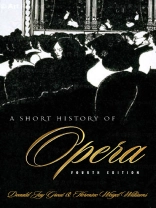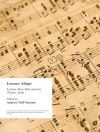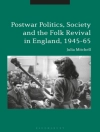When first published in 1947, A Short History of Opera immediately achieved international status as a classic in the field. Now, more than five decades later, this thoroughly revised and expanded fourth edition informs and entertains opera lovers just as its predecessors have.
The fourth edition incorporates new scholarship that traces the most important developments in the evolution of musical drama. After surveying anticipations of the operatic form in the lyric theater of the Greeks, medieval dramatic music, and other forerunners, the book reveals the genre’s beginnings in the seventeenth century and follows its progress to the present day.
A Short History of Opera examines not only the standard performance repertoire, but also works considered important for the genre’s development. Its expanded scope investigates opera from Eastern European countries and Finland. The section on twentieth-century opera has been reorganized around national operatic traditions including a chapter devoted solely to opera in the United States, which incorporates material on the American musical and ties between classical opera and popular musical theater. A separate section on Chinese opera is also included.
With an extensive multilanguage bibliography, more than one hundred musical examples, and stage illustrations, this authoritative one-volume survey will be invaluable to students and serious opera buffs. New fans will also find it highly accessible and informative. Extremely thorough in its coverage, A Short History of Opera is now more than ever the book to turn to for anyone who wants to know about the history of this art form.
表中的内容
List of Illustrations
Preface to the Fourth Edition
Introduction
Part I. Music and Drama to the End of the Sixteenth Century
1. The Lyric Theater of the Greeks
2. Medieval Dramatic Music
3. The Immediate Forerunners of Opera
Part II. The Seventeenth Century
4. The Beginnings: Opera in Florence and Mantua
5. Other Early Seventeenth-Century Italian Court Operas, Including the First Comic Operas in Florence and Rome
6. Italian Opera in the Later Seventeenth Century in Italy
7. Seventeenth-Century Italian Opera in German-Speaking Lands
8. Early German Opera
9. Opera in France from Lully to Charpentier
10. Opera in England
Part III. The Eighteenth Century
11. Masters of the Early Eighteenth Century
12. Opera Seria: General Characteristics
13. Opera Seria: The Composers
14. The Operas of Gluck
15. The Comic Opera of the Eighteenth Century
16. The Operas of Mozart and His Viennese Contemporaries
Part IV. The Nineteenth Century
17. The Turn of the Century
18. Grand Opera
19. Opera Comique, Operetta, and Lyric Opera
20. Italian Opera of the Primo Ottocento: Rossini, Donizetti, Verdi, and Their Contemporaries
21. The Romantic Opera in Germany
22. The Operas of Wagner
23. The Later Nineteenth Century: France, Italy, Germany, and Austria
Part V. Other National Traditions of Opera from the Seventeenth to the Early Twentieth Centuries
24. National Traditions of Opera
Part VI. The Twentieth Century
25. Introduction / Opera in France and Italy
26. Opera in the German-Speaking Countries
27. National Traditions in Russia and Neighboring Countries; Central and Eastern Europe; Greece and Turkey; the Netherlands, Denmark, Sweden, and Finland; Spain, Portugal, and Latin America
28. Opera in the British Isles; Canada; Australia and New Zealand(r)MDBRØ (r)MDNMØ
29. Opera in the United States
Appendix: Chinese Opera
List of Abbreviations
Bibliography
Sources and Translations of Musical Examples
Index
关于作者
Donald Jay Grout was, until his death in 1987, Given Foundation Professor of Musicology Emeritus at Cornell University. He was author of the classic A History of Western Music, and Alessandro Scarlatti: An Introduction to His Operas, as well as general editor of The Operas of Alessandro Scarlatti.Hermine Weigel Williams is Scholar-in Residence at Hamilton College. She has contributed to The New Grove Dictionary of Music, The Operas of Alessandro Scarlatti, and The Symphony: 1720–1840. She is author of Francesco Bartolomeo Conti: His Life and Music, Sibelius and His Masonic Music, and co-author of Giovanni Battista Pergolesi: A Guide to Research. She is also co-editor of Facts Behind the Songs: A Handbook of American Popular Music from the Nineties to the 90’s.












